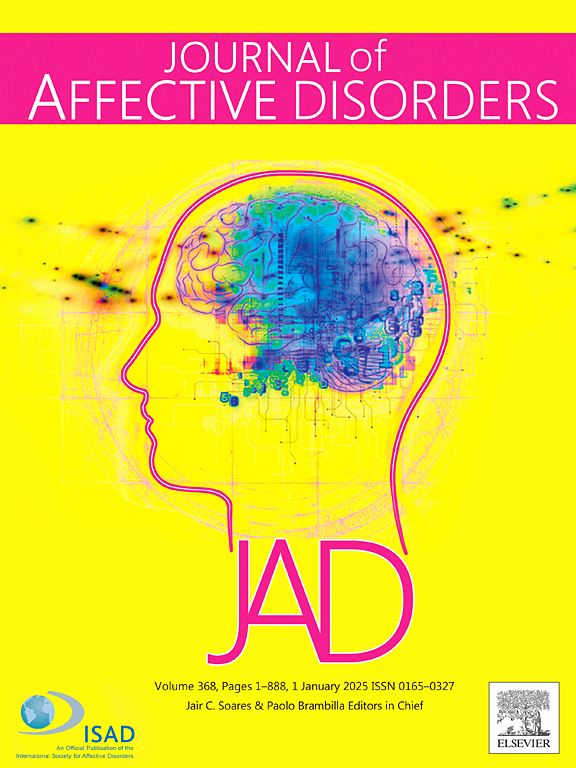Comorbid anxiety in depression and rTMS treatment response: A retrospective study
IF 4.9
2区 医学
Q1 CLINICAL NEUROLOGY
引用次数: 0
Abstract
Introduction
Few studies have examined the relationship between anxiety and response to repetitive transcranial magnetic stimulation (rTMS) in patients with unipolar depressive disorder (UDD) and bipolar depressive disorder (BDD). The primary aim of this study was to investigate the correlation between anxiety symptoms and the response to rTMS in individuals with comorbid anxiety, in both UDD and BDD patients. The secondary aim was to evaluate the efficacy of rTMS in reducing depressive symptoms, anxiety, and different subtypes of anxiety disorder.
Methods
A total of 379 outpatients (214 UDD, 165 BDD) underwent 20 sessions of either right unilateral low-frequency rTMS or sequential bilateral rTMS targeting the dorsolateral prefrontal cortex (DLPFC). Beck Anxiety Inventory (BAI) and Beck Depression Inventory (BDI-II) were used for assessment.
Results
Binary logistic regression analysis indicated that pre-treatment physical anxiety scores showed a negative correlation with rTMS response, while subjective anxiety scores were positively associated. Distinct and overlapping response profiles for UDD and BDD patients with comorbid anxiety were identified based on anxiety symptoms. Predictive values for the BDD group were more reliable than those for the UDD group (PPV: 75 %, NPV: 77 %). Moreover, both unilateral and bilateral rTMS significantly reduced depressive symptoms as well as physical, subjective, and panic-related anxiety symptoms.
Conclusion
The findings suggest that in both UDD and BDD, physical anxiety symptoms are linked to less response to rTMS, whereas subjective anxiety symptoms are associated with more response. Future prospective studies are required to confirm the predictive value of anxiety symptoms in UDD and BDD patients who suffer from comorbid anxiety.
求助全文
约1分钟内获得全文
求助全文
来源期刊

Journal of affective disorders
医学-精神病学
CiteScore
10.90
自引率
6.10%
发文量
1319
审稿时长
9.3 weeks
期刊介绍:
The Journal of Affective Disorders publishes papers concerned with affective disorders in the widest sense: depression, mania, mood spectrum, emotions and personality, anxiety and stress. It is interdisciplinary and aims to bring together different approaches for a diverse readership. Top quality papers will be accepted dealing with any aspect of affective disorders, including neuroimaging, cognitive neurosciences, genetics, molecular biology, experimental and clinical neurosciences, pharmacology, neuroimmunoendocrinology, intervention and treatment trials.
 求助内容:
求助内容: 应助结果提醒方式:
应助结果提醒方式:


